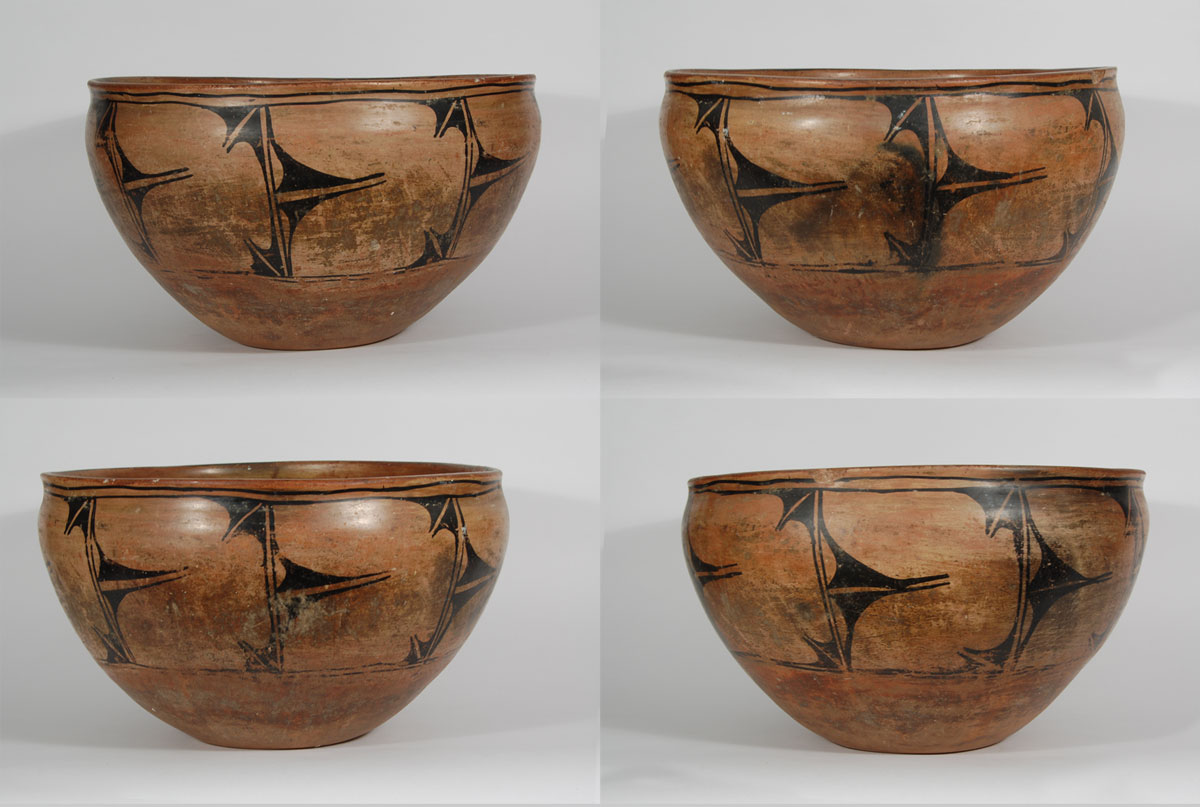Adobe Gallery Blog
Santo Domingo Pueblo 19th Century Dough Bowl - 16876
 According to Jonathan Batkin (1987), the Smithsonian Institution collected very little pottery from Kewa Pueblo in 1879 and 1880, an indication that potters were making what they needed for daily use and not producing for sale to merchants or collectors. This situation changed in 1880 when a railroad stop was built near the pueblo and potters then began making pottery for sale. (That trading post at the railroad stop burned down and was closed a number of years ago but has just recently, in 2015, been restored and re-opened.) Pottery being made for use at the pueblo and pottery made for sale in the 1880s was of the highest quality and this persisted until around 1920.
According to Jonathan Batkin (1987), the Smithsonian Institution collected very little pottery from Kewa Pueblo in 1879 and 1880, an indication that potters were making what they needed for daily use and not producing for sale to merchants or collectors. This situation changed in 1880 when a railroad stop was built near the pueblo and potters then began making pottery for sale. (That trading post at the railroad stop burned down and was closed a number of years ago but has just recently, in 2015, been restored and re-opened.) Pottery being made for use at the pueblo and pottery made for sale in the 1880s was of the highest quality and this persisted until around 1920.
This Kewa Pueblo polychrome dough bowl dates to the 1880s or 1890s. It has the traditional rag-wiped bentonite slip, black rim around the top, and paired black framing lines above and below the decorated panels. The main body is decorated with sparsely spaced black cloud elements that frame otherwise large areas of undecorated expanse. The undecorated areas appear to be the focal point of the decoration from the manner in which the black designs frame them. Its fire clouds (natural decoration during the firing process when the fuel falls against the vessel and creates a dark area) are soft and beautiful. Fire clouds are a natural decoration during the firing process when the fuel falls against the vessel and creates a dark area.
#adobegallery #SouthwestIndianPottery #KewaPueblo #KewaPottery #PuebloPottery #SouthwestIndianArt #FinePuebloPottery #HistoricPottery #IndianMarket #sfim2018 #NativeAmericanArts

